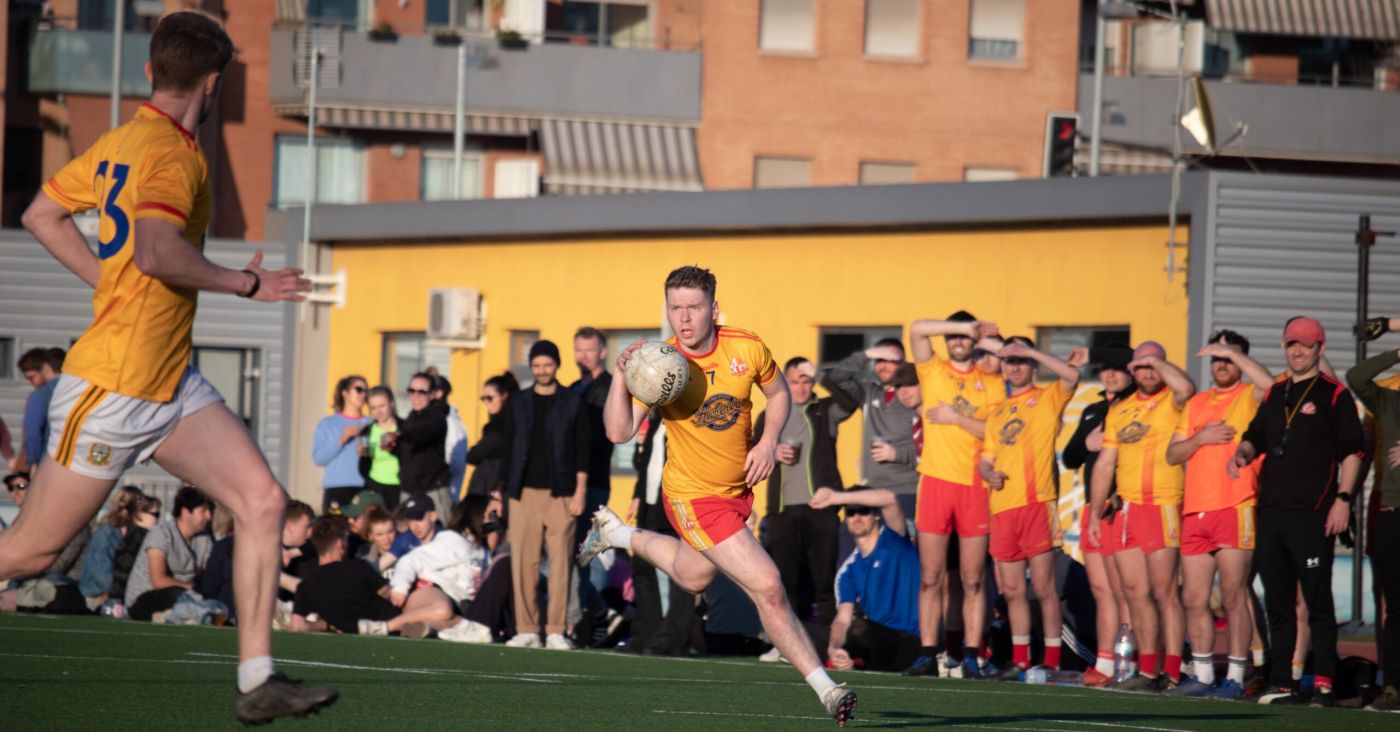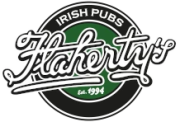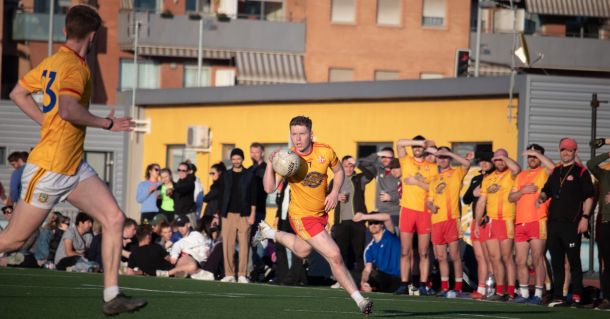A Guide to Gaelic Football and Hurling

Flaherty’s Irish Bar in Barcelona has long been a hub for all things Irish in the Catalan capital. From traditional Irish pub grub to the best in Irish beers and beverages, people flock from all over the world to revel in our authentic Irish atmosphere. It’s no wonder so many Irish people visiting or living in Barcelona count this as a home away from home. And what would home be without our native Irish sports of Gaelic football, hurling, and camogie? So, whether you’re new to the world of Gaelic games and curious to learn more, or simply looking to stay abreast of all things GAA while you’re abroad, read on to find out everything you need to know.
What is Gaelic Football?
For the uninitiated, Gaelic football is a team sport played primarily in Ireland. It has often been described as a hybrid sport, combining elements of association football, basketball, and rugby. However, the truth is that Gaelic football predates all these popular sports. Its origins can arguably be traced back to the middle ages, with the earliest mention of the sport, referred to as ‘caid’ in the Irish language, dating as far back as 1308.
Rules of Gaelic Football
Gaelic football is a 15 aside game played with a round ball similar in size to a football, but heavier. It is played on a pitch approximately 80-90 metres in width and 130-140 metres in length. The goalposts might best be described as a cross between those used in soccer and rugby. The object of the game is to kick the ball over the bar for 1 point or under and into the goals for 3. Players can kick or hand-pass the ball, but they mustn’t take more than 4 steps without playing the ball. Players mustn’t pick the ball off the ground.
What is Hurling?
Hurling, or camogie for the women’s code, is a sport whose origins can be traced back even further than Gaelic football. In fact, it originated in ancient Celtic Ireland, and was played by many of the most prominent heroes of Irish mythology, such as Cuchulain. The earliest known historical reference to the sport dates all the way back to the fifth century, making it the oldest sports in the world. And as if that wasn’t enough, hurling is also the fastest field sport on the planet!
Rules of Hurling
Perhaps the easiest way to describe hurling is to imagine a hockey game played in the air and on the ground, where players are permitted to catch and strike the ball, or ‘sliotar’ as it is known. The rules are similar to those of Gaelic football, as are the objectives. Tackling, passing, scoring, and fouling are much the same as they are in its football counterpart. What makes hurling distinctive is the sheer speed and ferocity of the play. In fact, it was famously banned during British rule for being too warlike. Although not as widely played as Gaelic football, for most Irish people it is regarded as the national game, with the hurley stick, or “camán”, being an important cultural symbol in much the same way as the harp or shamrock.
What Makes Gaelic Games Different to Other Sports
Gaelic football and hurling are the most watched sports on the island of Ireland. Its headquarters is Croke Park Stadium in Dublin, which is the fourth biggest sports stadium in Europe. Every year, 1.5 million people attend GAA matches, which accounts for 57% of all sporting attendances on the island. Here’s a rundown of some of the most distinctive features of Gaelic football and hurling.
- Gaelic Football and Hurling are amateur sports. Players do not receive remuneration, even when playing in front of 81,000 spectators in Croke Park and a television audience of over a million on All-Ireland Final day.
- Players must play for the county they are from. Although transfers are permitted they are very rare and widely frowned upon.
- Each county in Ireland has its own team, made up of the best players from clubs within the county.
2024 GAA Fixtures and Calendar
The GAA and LGFA calendar consists of two primary competitions, the National League and the All-Ireland Championship. The national league is widely considered a curtain raiser to the championship, and runs from February to April. The championship kicks off in May for both codes and finishes in July.
When is the All-Ireland Final
The 2024 All-Ireland Hurling final is scheduled to take place in Croke Park on the 21st of July 2024, 3:30 pm Irish time. The All-Ireland Football Final is scheduled to take place one week later, on the 28th of July in Croke Park at the same time. The LGFA Women’s All-Ireland football final will take place on the 4th of August, while its camogie counterpart is scheduled to be played on the August 8th.
GAA in Spain
If you’re curious to try out this sport or are simply looking to continue playing while you’re living in Spain, you’ll be delighted to hear that Gaelic football and hurling have taken root in Iberia. As of 2024, there are 17 active GAA clubs in Spain, with leagues for both men and women. Our local club in the Catalan capital is Barcelona Gaels. Founded in 2001, the men and women of Barcelona Gaels have had great success on and off the field and have done the city proud over the years. That’s why Flaherty’s Irish Bar is honoured to be the official club sponsor of Barcelona Gaels.
Watch Gaa in Barcelona
Whether you’re curious to see these unique sports for yourself, or a hardcore fan who can’t bear to miss your county in action, Flaherty’s is the place for you. We’ll be showing all the thrills and spills of the GAA season throughout the year. All-Ireland Final day in Flaherty’s is as lively a festival as our beloved St. Patrick’s Day. Supporters from all corners of the island gather to witness the spectacle. So why not make a day of it at Flaherty’s Irish Bar? Located in the heart of Barcelona, it’s been our pleasure to share Irish culture with Barcelona and the world for over 20 years.

